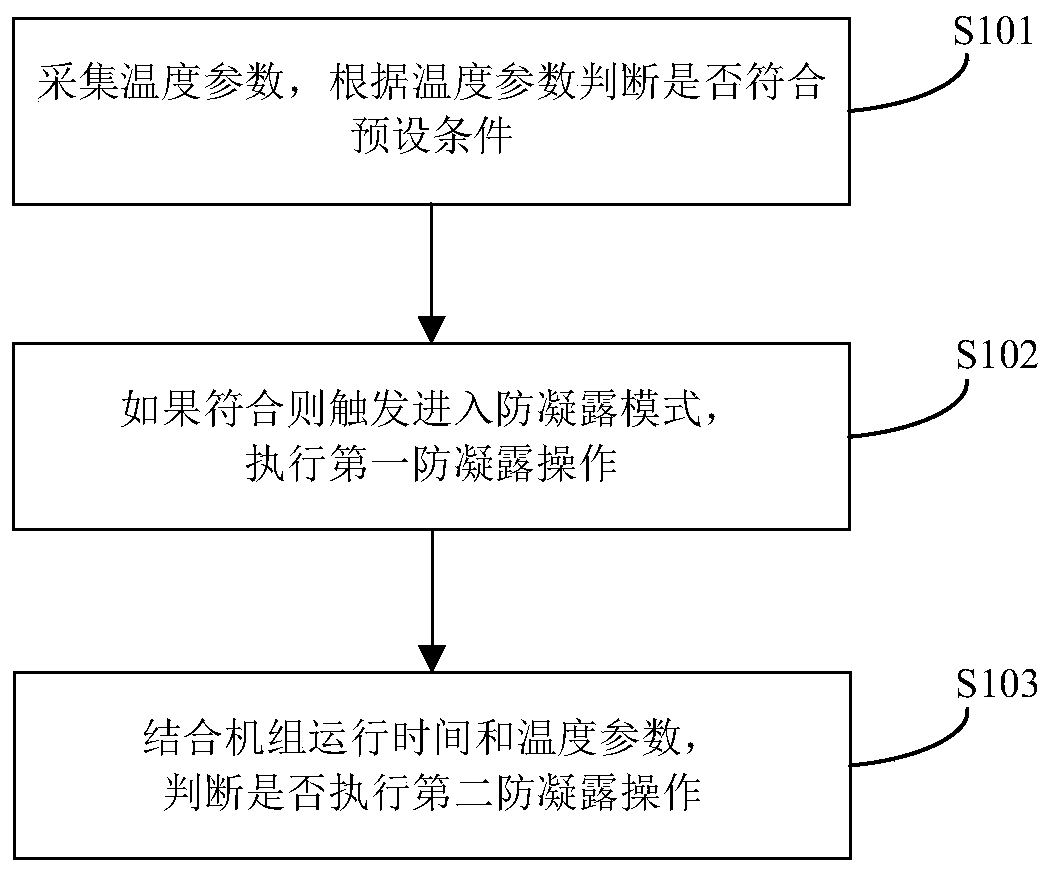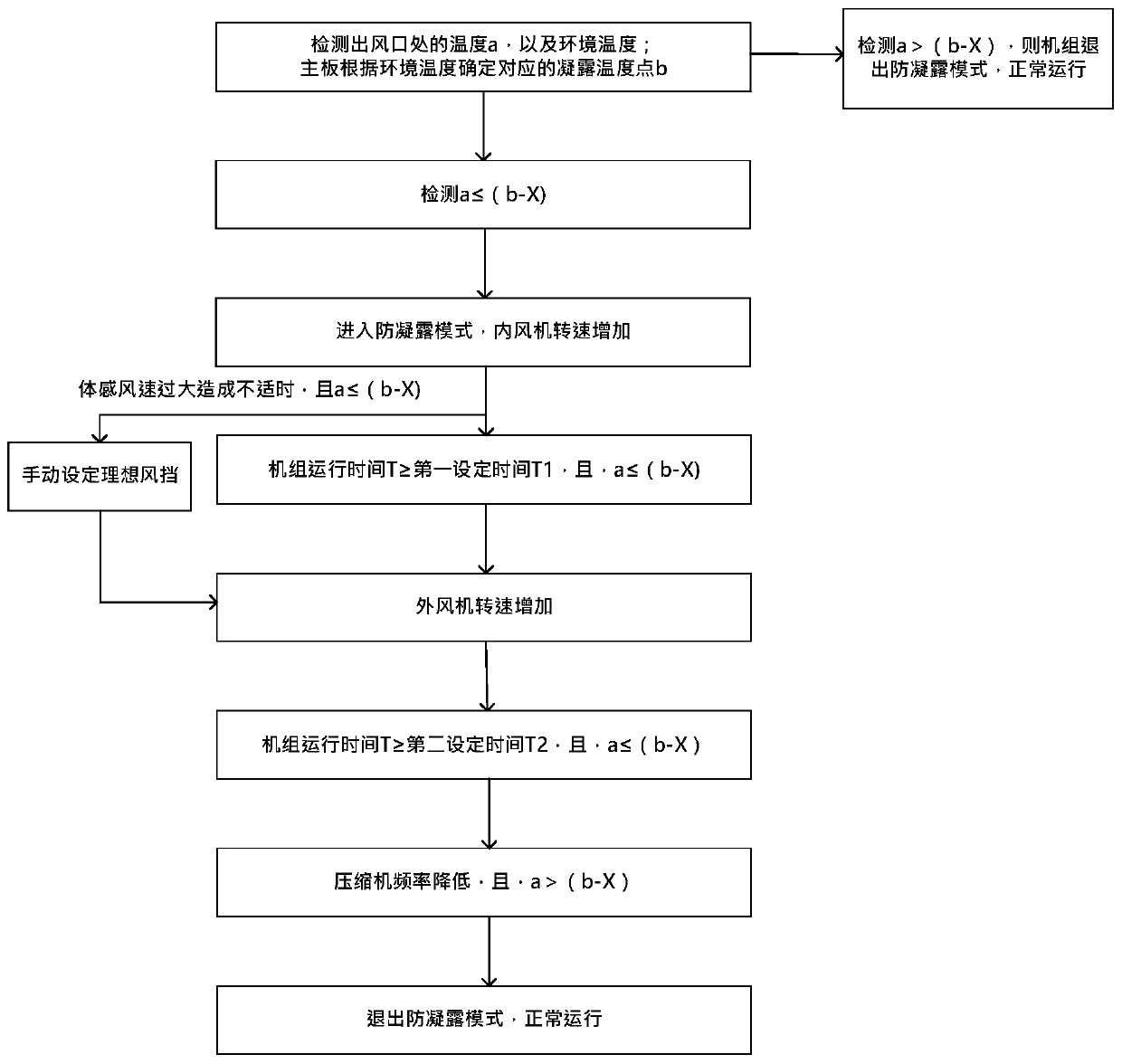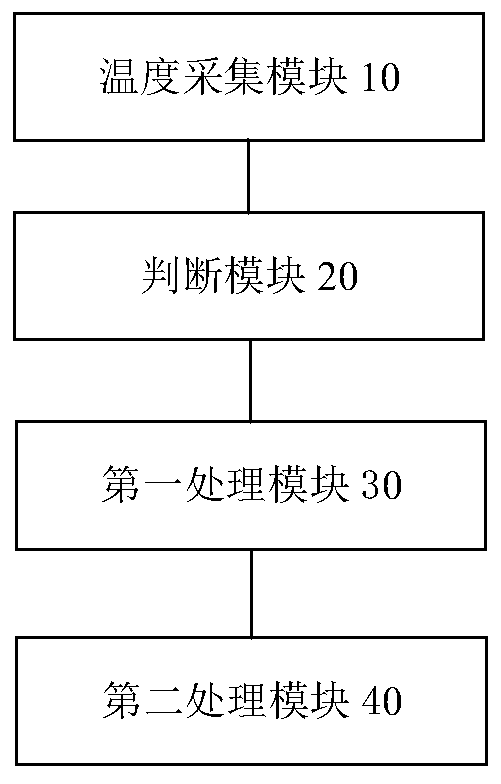Effective anti-condensation control method and device and air conditioning equipment
A control method and anti-condensation technology, which are applied in the direction of control input involving air characteristics, mechanical equipment, high-efficiency adjustment technology, etc., to avoid potential electrical safety hazards, solve air-conditioning condensation and dripping, and increase service life.
- Summary
- Abstract
- Description
- Claims
- Application Information
AI Technical Summary
Problems solved by technology
Method used
Image
Examples
Embodiment 1
[0031] The technical scheme of the invention is realized by a temperature sensor and a logic program of a main board. figure 1 is a flow chart of the anti-condensation control method according to an embodiment of the present invention, such as figure 1 As shown, the method includes the following steps:
[0032] Step S101, collecting temperature parameters, and judging whether the preset conditions are met according to the temperature parameters;
[0033] Step S102, if it is met, trigger to enter the anti-condensation mode, and execute the first anti-condensation operation;
[0034] Step S103, combining the running time and temperature parameters of the unit to determine whether to execute the second anti-condensation operation.
[0035] In this embodiment, the temperature parameter is used to determine whether to enter the anti-condensation mode, and the anti-condensation control is realized by adjusting the speed of the internal and external fans combined with frequency mod...
Embodiment 2
[0043] figure 2 is the flow chart of anti-condensation control of the unit according to the embodiment of the present invention, such as figure 2 As shown, the process includes:
[0044] 1) Detect the temperature a at the air outlet (also called the air outlet frame) and the ambient temperature; the main board determines the corresponding condensation temperature point b according to the ambient temperature, and sets the empirical correction threshold X. Compare a≤b-X.
[0045] 2) When a≤(b-X), the control increases the speed of the internal fan. When the user feels uncomfortable due to excessive wind speed, the user can manually set the ideal wind speed. The unit enters the next level of adjustment and does not increase the speed of the internal fan. When a > (b-X), the unit exits the anti-condensation mode and operates normally.
[0046] What needs to be explained is that the discomfort caused by excessive wind speed is perceived by the human body. Each person’s consti...
Embodiment 3
[0051] corresponds to figure 1 The anti-condensation control method introduced, this embodiment provides an anti-condensation control device, such as image 3 The structural block diagram of the anti-condensation control device shown, the device includes:
[0052] Temperature acquisition module 10, for collecting temperature parameters;
[0053] A judging module 20, configured to judge whether a preset condition is met according to a temperature parameter;
[0054] The first processing module 30 is configured to trigger the anti-condensation mode to execute the first anti-condensation operation after the temperature parameter meets the preset condition;
[0055] The second processing module 40 is used for judging whether to execute the second anti-condensation operation in combination with the running time and temperature parameters of the unit.
[0056] In this embodiment, the temperature parameter is used to determine whether to enter the anti-condensation mode, and the a...
PUM
 Login to View More
Login to View More Abstract
Description
Claims
Application Information
 Login to View More
Login to View More - R&D
- Intellectual Property
- Life Sciences
- Materials
- Tech Scout
- Unparalleled Data Quality
- Higher Quality Content
- 60% Fewer Hallucinations
Browse by: Latest US Patents, China's latest patents, Technical Efficacy Thesaurus, Application Domain, Technology Topic, Popular Technical Reports.
© 2025 PatSnap. All rights reserved.Legal|Privacy policy|Modern Slavery Act Transparency Statement|Sitemap|About US| Contact US: help@patsnap.com



